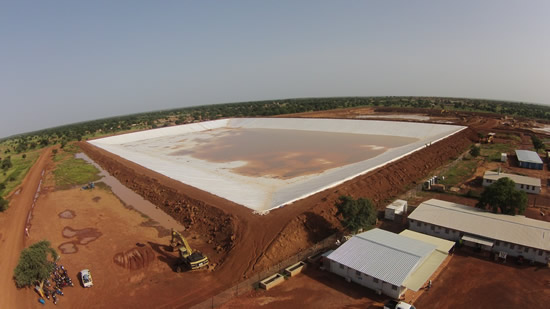Solmax made public its well-received presentation on blown film geomembranes and flat die geomembranes. The July 2016 talk, led by Mathieu Cornellier, P.Eng, addresses the differences between the two plastic extrusion processes, how they influence the final high-density polyethylene (HDPE) geomembrane product, relevant standards for selecting these materials, and potential misunderstandings about blown film and flat die geomembranes.
The 36-minute webinar session, which is posted on Solmax’s YouTube Channel, is another high-level engineering and manufacturing presentation that designed by the Montreal-headquartered, global geosynthetics manufacturer.
Another webinar in the series focused on “Additive Packages, Resins, and Geomembrane Performance.”
FLAT DIE VS. BLOWN FILM GEOMEMBRANES
The manufacturing processes used for geosynthetics are complex, but so are geosynthetic materials. Learning more about how materials are produced is useful to better understanding how to select geosynthetics—especially in sensitive applications, such as containment applications that call for HDPE geomembranes.
Manufacturers ensure field performance through their selection of raw materials, utilization of additive packages, matching it with the right method of production, and employing strong quality control programs for testing, handling, and delivering materials to site.
Even that, however, is an oversimplification. The properties imparted in a geomembrane during production will impact the service life of the material–but the reasons that one manufacturing method might be selected can hinge largely on the types of resins available in the regional market for the manufacturer, which must then adjust its processes to optimize the materials for use in landfills, mining, environmental protection, industrial processing, and more.
Particularly tricky topics in the discussion include how to interpret potential “waves” in a geomembrane from one process versus the other, how expansion of materials in the field during installation are more serious concerns, and how to manage those concerns.
Essentially, Solmax’s presentation helps remove a lot of the mystery between manufacturing and the product delivered to site. Cornellier, who serves as a Technical Manager and Innovation Leader with the company, presents all of this with objectivity.
 Key topics in the presentation include:
Key topics in the presentation include:
- Mechanical Properties
- Melt Flow Index
- Stress Crack Resistance
- Low-Temperature Brittleness
- Sheet thickness control
- Chemical Resistance
- Tensile Strength at Yield
- Permeability
- Texturing Processes
- Residual stress of textured sheets
- Process misunderstandings
Learn more about Solmax’s geosynthetics and engineering services at www.solmax.com.











